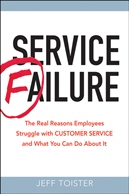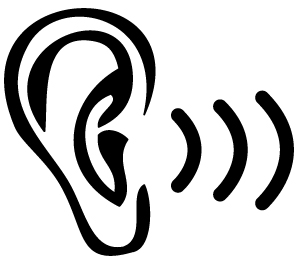Three upselling mistakes that hurt customer service
 Jeff Toister
Jeff Toister  Thursday, December 1, 2011 at 2:58PM |
Thursday, December 1, 2011 at 2:58PM | It's natural for companies to want to upsell their customers on additional or more expensive products or services. Just be sure your company doesn't make one of these three mistakes that can hurt customer service.
Mistake #1: Being pushy
I took my car to my local car wash last Saturday. "I'll just have a regular wash today," I told the ticket writer. He responded with the obligatory upsell, trying to get me to upgrade to a more expensive package. "Not today," I replied. "I just want a regular wash."
That should have been it. He made an offer. I declined. End of transaction.
Unfortunately, this guy wasn't going to take no for an answer. He continued to push the offer even after I repeatedly said no. He didn't relent until I finally I said I'd have to take my car somewhere else if he couldn't honor my request.
Upselling is never okay if it is annoying to the customer. Employees should be trained to back off once they receive a clear signal that the customer isn't interested.
Mistake #2: Upselling on price alone
Part of what made the car wash guy's sales pitch so weak and annoying was he only talked about price. The upgraded car wash may have been an insanely cheap deal, but that didn't matter because it wasn't something I needed or wanted.
He may have had better luck if he had explained some of the benefits offered by the upgraded package. An even smarter approach would be to ask me a few questions first and then tailor his offer based upon my responses.
Upselling based on a customer's wants and needs can actually be helpful to the customer. Upselling on price alone can often feel pushy and transactional.
Mistake #3: Making your customer feel stupid
The car wash guy tried really hard to make me feel stupid. He repeatedly asked if I was driving someone else's car since the only people who wouldn't go for his sweet deal were people who didn't care about the cars they were driving.
The kicker was when he finally agreed to do a regular wash and I started walking towards the waiting area. While I was still within earshot, he turned to another customer and began bad mouthing me and my poor decision making.
It's never a good tactic to talk down to your customer when upselling. Especially if they have a blog.
Epilogue
I was tempted to take my car somewhere else after hearing the ticket writer's disparaging comments, but I'd be the one who lost the most on that deal. This car wash does a great job, is reasonably priced, and is convenient to my home.
Instead of leaving I went to the cashier and politely asked to speak with the manager. When he arrived, I calmly explained what had happened. He was very apologetic and told me he would be happy to take care of my car for me. Thanks to a few tips from my recent blog post on how to get better service, I left the car wash with a clean car and confidence that I'll get better service the next time I visit.
I should also note the manager's actions are the reason I'm not mentioning the name of the car wash in my blog. My personal policy is to give businesses a chance to handle a complaint before I air my gripes in a public forum.






